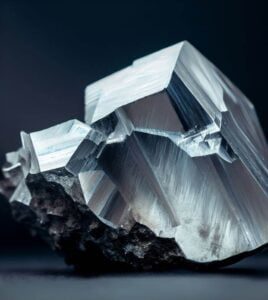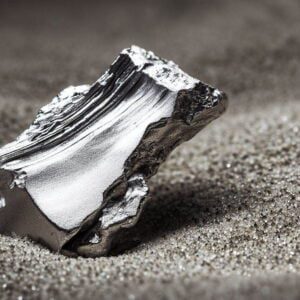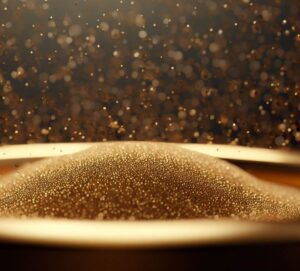Diamond
The diamond is a symbol of luxury and romance: it is commonly used in the production of engagement rings, wedding rings, earrings, and high-quality necklaces.
The Symbol of Luxury and Romance
In jewelry, a diamond is a precious, natural, and valuable gemstone commonly used in the creation of high-quality jewelry. The diamond is known for its hardness, brilliance, and transparency, and it is considered the symbol of luxury and romance.
Diamond is a pure form of carbon that has been exposed to high pressures and temperatures in the Earth's crust for millions of years, resulting in its unique crystalline structure. It is found in various parts of the world, but the main sources of diamonds are Russia, Botswana, Canada, and Australia.
Diamonds are evaluated based on the "four Cs": cut, color, clarity, and carat weight. Cut refers to the quality of the diamond's shape and brilliance, while color refers to the absence of color in the diamond. Clarity refers to the presence or absence of inclusions or imperfections in the diamond, and carat weight refers to the size and weight of the diamond.
Diamonds are commonly used in the production of engagement rings, wedding rings, earrings, and high-quality necklaces. Diamonds can also be combined with other metals and gemstones to create unique and customized jewelry designs. Due to their rarity and beauty, diamonds continue to be one of the most popular and highly valued materials in jewelry.
Diamond in Jewelry
Some meanings of the diamond in jewelry are:
- The diamond is a symbol of love and commitment, as it is used to seal the marital bond with an unbreakable and eternal stone. The diamond represents fidelity, loyalty, and trust between the couple.
- The diamond is a symbol of luxury and beauty, as it is one of the most valuable and cherished gems for its exceptional aesthetics. Diamonds have been worn by kings, emperors, and aristocrats as a sign of opulence and power. The diamond enhances the brilliance of any piece of jewelry and draws admiration from everyone.
- The diamond is a symbol of perfection and purity, as it is a stone formed by a single chemical element, carbon, without impurities. The diamond has unique clarity and transparency, reflecting light in all directions. The diamond also possesses spiritual properties, such as enhancing the power of other stones, protecting against negative energies, and favoring intuition.
Factors that Determine the Price and Choice of a Diamond
The price of a diamond can vary significantly based on various factors.
Diamonds are evaluated using the "4 Cs" system: cut, color, clarity, and carat. Here is an overview of how these factors can affect the price of a diamond:
- Cut: The cut refers to the quality of the diamond's shape and the precision of its faceting. An excellent cut allows the diamond to reflect light optimally, giving it exceptional brilliance and sparkle. Diamonds with higher-quality cuts tend to have higher prices.
- Color: Diamonds are graded on a color scale, ranging from D (colorless) to Z (light color). Colorless diamonds are rarer and therefore more valuable. Diamonds with more intense colors (such as natural colored diamonds) can also have very high prices due to their rarity.
- Clarity: Clarity refers to the presence of inclusions or imperfections within the diamond. Diamonds with fewer imperfections have higher clarity and generally command higher prices due to their greater visual purity.
- Carat: Carat is a measure of a diamond's weight. Larger diamonds tend to have higher prices due to their larger size and weight.
In addition to these factors, the price of a diamond can also be influenced by external factors such as supply and demand in the market, the reputation of the seller, and how the diamond has been certified by renowned gemological laboratories.
For an accurate price of a specific diamond, it's advisable to consult jewelers, gemologists, or professionals in the jewelry industry. If you're interested in acquiring a diamond, I suggest researching and comparing prices at different establishments and online to ensure you're getting the best value for your investment.
Types of Diamond Cuts
Cut
It's a measure of the quality of a diamond's faceting, indicating the proportions, symmetry, and polishing of its facets. The cut affects the diamond's brilliance, fire, and dispersion of light. The cut is expressed on a scale ranging from Excellent to Poor. A better cut corresponds to a higher value of the diamond.
The cuts of a diamond are a crucial aspect of its beauty and brilliance.
Here is a description of the most common diamond cuts:
Round Brilliant Cut
It's the most popular and classic cut. It has 58 facets, including a flat table on the top and a tapered pavilion at the bottom.
Princess Cut
It's a square or rectangular cut with pointed corners. It has 58 or 76 facets, depending on the number of additional facets on the bottom of the stone.
Emerald Cut
It's a rectangular cut with clipped corners and a flat top surface called the "table." It has parallel rectangular facets on the sides.
Radiant Cut
It's a rectangular or square cut with rounded corners. It features a combination of rectangular and triangular facets that give it intense sparkle.
Cushion Cut
It's a square or rectangular cut with rounded corners. It has a soft appearance and is often described as similar to a cushion.
Asscher Cut
It's similar to the emerald cut but with more pronounced corners and a more square appearance. It has step-like facets in a ladder pattern.
Oval Cut
It's an elliptical cut in the shape of an oval. It has a brilliance similar to the round cut but with a more unique appearance.
Marquise Cut
It's an elongated oval-shaped cut with two pointed ends. It has an elegant and elongated appearance.
These are just some of the most common cut shapes, but there are many more variations and combinations available.
Each cut has its own specific proportions and characteristics that influence how light interacts with the diamond, determining its brilliance and beauty.
Diamond Colors
Color
The absence of color is highly valued in most diamonds, as a colorless diamond allows light to pass through it and refract optimally, creating the brilliance and sparkle we associate with diamonds. Diamonds with more noticeable color tones tend to be less valuable because their ability to reflect light is affected.
Diamonds are classified on a color scale that ranges from colorless diamonds to slightly colored diamonds. The color grading is used to evaluate how colorless or what color tone a diamond exhibits. The most commonly used color scale is the GIA (Gemological Institute of America) Diamond Color Scale. Here is the diamond color scale according to GIA:
D (Colorless)
D graded diamonds are colorless and extremely rare. They are considered the most valuable diamonds due to their lack of color.
E (Colorless)
E diamonds are also virtually colorless and of very high quality. The difference between a D and an E is very subtle and is generally only discerned by expert gemologists.
F (Colorless)
F diamonds are nearly colorless and show only very faint traces of color that are difficult to detect with the naked eye.
G (Slightly Perceptible Color)
G diamonds have a slightly perceptible color only when compared to higher-quality diamonds. They are a popular choice due to their balance between quality and value.
H (Perceptible Color)
H diamonds exhibit perceptible color only when compared to higher-grade diamonds. They remain a popular choice in jewelry.
I (Perceptible Color)
I diamonds have a perceptible color and may display a very slight yellow or brown hue. Despite this, they are often chosen for their good balance between price and quality.
J (Perceptible Color)
J diamonds have a more noticeably perceptible color, but they can still be attractive in jewelry, especially in settings that minimize the impact of color.
As we move down the scale, the color hue becomes more noticeable. The letters from D to J mainly refer to diamonds with very subtle yellow or brown tones. Diamonds with more intense colors, such as natural colored diamonds (yellow, pink, blue, etc.), are evaluated on a different scale and are not included in this classification.
It's a measure of the degree of diamond coloring, indicating the presence or absence of yellow or brown tones. Color is expressed on an alphabetical scale ranging from D (colorless) to Z (light yellow or brown). The lower the color, the higher the value of the diamond.
Clarity
Clarity in a diamond refers to the presence of internal and external inclusions or features that can affect its appearance and brilliance. These inclusions are like natural "imperfections" that may have formed during the diamond's growth process beneath the Earth's surface. Evaluating clarity is an important aspect in assessing the quality of a diamond.
Inclusions can vary and range from small internal marks to cracks, clouds, trapped minerals, and more. External features, also known as "blemishes," can include scratches, polishing marks, and other defects on the diamond's surface.
Diamond Clarity Scale
The diamond clarity scale is used to classify and assess the quantity and visibility of these inclusions. The most commonly used clarity scale is the GIA (Gemological Institute of America) Diamond Clarity Scale. Here are the clarity grades in this scale:
- Flawless (FL): Diamonds with no visible inclusions or imperfections under 10x magnification. Internally Flawless (IF): Diamonds with no visible inclusions under 10x magnification, but they might have imperfections on the surface.
- VVS1 and VVS2 (Very, Very Slightly Included): Extremely small and difficult-to-see inclusions even under 10x magnification.
- VS1 and VS2 (Very Slightly Included): Small inclusions visible under 10x magnification, but they are hard to detect with the naked eye
- SI1 and SI2 (Slightly Included): Inclusions visible under 10x magnification and possibly visible to the naked eye in some cases.
- I1, I2, and I3 (Included): Inclusions visible to the naked eye and may affect the diamond's appearance and durability.
Generally, diamonds with higher clarity grades (FL, IF, VVS1, VVS2) have fewer inclusions and are considered of higher quality. However, many inclusions are tiny and don't significantly impact the diamond's appearance to the naked eye. The choice of a diamond's clarity will also depend on personal preferences and the buyer's budget, as diamonds with lower clarity grades can be more affordable and still look beautiful when set in jewelry.
Carat
Carat is a measure of weight that indicates the size of the diamond. The larger the carat, the higher the value of the diamond.
"Carats" (abbreviated as ct) are a weight measurement used for diamonds and other gemstones. One carat equals 0.2 grams or 100 points. The word "carat" comes from the ancient practice of using carob tree seeds, which were uniform in weight, as counterweights to balance against the given gem.
Common categories of diamond weight:
- Small Diamonds: Diamonds are generally considered "small" if they are less than 0.3 carats. These diamonds are often used in jewelry with multiple stones, such as pavé and halos.
- Medium-Sized Diamonds: Diamonds that are between 0.3 and 1.0 carats are considered medium-sized. They are popular for engagement rings and other individual pieces of jewelry.
- Large Diamonds: Diamonds that exceed 1.0 carats are considered large. These diamonds can have a significant visual impact and are especially valued in luxury jewelry.
It's important to note that as the diamond's weight increases, its value can increase exponentially. This is because larger diamonds are rarer and have a greater visual impact. However, the choice of a diamond's size also depends on personal preferences and budget. Some people prefer smaller but higher-quality diamonds, while others might value visual size more. Ultimately, the balance between weight, quality, and budget is a key consideration when choosing a diamond.
Authenticity of a Diamond
Steps to Verify the Authenticity of a Diamond
Verifying the authenticity of a diamond is a crucial process to ensure that you're acquiring a genuine and high-quality diamond. Here are some steps you can follow to verify the authenticity of a diamond:
- Gemological Laboratory Certificate: One of the most reliable methods to verify a diamond is through a certificate issued by a recognized gemological laboratory such as GIA (Gemological Institute of America), AGS (American Gem Society), or IGI (International Gemological Institute). These certificates provide details about the diamond's characteristics, such as cut, color, clarity, and carat weight, along with a unique diamond identification. Verify that the certificate matches the characteristics of the diamond you're acquiring.
- Loupe Identification: Use a jeweler's loupe to examine the diamond for inclusions, features, and unique marks that can confirm its authenticity. Natural inclusions are like "fingerprints" and can help distinguish a genuine diamond.
- Diamond Tester: A diamond tester is a tool used to scratch the diamond. If the diamond is genuine, it won't be affected by the diamond tester. However, note that this method can be invasive and is best done by a professional.
- Light Refraction: An experienced jeweler can examine how light passes through the diamond. Genuine diamonds refract light in a specific way, creating characteristic sparkles.
- Visual Comparison: If you have access to genuine diamonds to compare with, you can use visual comparison to detect differences in appearance, brilliance, and diamond characteristics.
- Consult with an Expert: It's always advisable to consult with a gemologist or a trusted jeweler before making a significant purchase. These professionals are trained to evaluate diamonds and verify their authenticity.
- Buy from Trusted Sources: Make your diamond purchases from reputable jewelers and establishments that have a good reputation in the industry. This reduces the likelihood of acquiring fake or low-quality diamonds.
If you're acquiring a valuable diamond, it's important to take the time to research and verify the diamond's authenticity before making the purchase.
Authenticity Marks of a Diamond
The authenticity of a diamond is often verified through certificates issued by renowned gemological laboratories. These certificates provide detailed and accurate information about the diamond's characteristics, such as cut, color, clarity, and carat weight. Below are some of the most well-known and respected authenticity marks in the gemology industry:
- GIA (Gemological Institute of America): Diamonds certified by GIA are highly valued in the industry. GIA certificates include a unique report number that can be used to verify the authenticity and characteristics of the diamond through the GIA's website.
- AGS (American Gem Society): AGS issues detailed certificates about diamond characteristics, including a proportion diagram that shows the cut. AGS also uses a unique report number that can be verified on their website.
- IGI (International Gemological Institute): Diamonds certified by IGI also provide detailed information about diamond characteristics. IGI uses a report number that can be used for authenticity verification online.
- HRD Antwerp: One of the oldest and respected gemological laboratories, HRD Antwerp's certified diamonds also include comprehensive details about diamond characteristics and a unique certificate number for online verification.
- EGL (European Gemological Laboratories): While there are several EGL laboratories worldwide, certificates issued by EGL tend to be less consistent in terms of grading standards compared to GIA, AGS, and other leading labs.
- Other Trusted Laboratories: In addition to the mentioned ones, there are other trustworthy gemological laboratories around the world, such as IGI, GCAL (Gem Certification & Assurance Lab), and more. However, it's always advisable to research and verify the reputation of the laboratory before relying on its certification.
Certificates issued by these laboratories provide detailed and reliable information about the diamond's characteristics, which helps ensure its authenticity and quality. When purchasing a diamond, make sure to obtain a certificate from one of these recognized laboratories and verify authenticity using the report numbers provided in the certificates.
Identification of Authentic Diamonds
Authentic diamonds often have unique identification numbers linked to certificates issued by recognized gemological laboratories. These identification numbers allow tracking and verifying the authenticity and characteristics of the diamond. Each laboratory may have its own numbering system, but in general, these identification numbers are printed on the certificate and often laser-inscribed onto the diamond under microscopic size.
Here's how this process typically works:
- Laboratory Certificate: When a diamond undergoes evaluation and certification at a gemological laboratory, a certificate detailing its characteristics such as cut, color, clarity, and carat weight is issued. On the certificate, there will be a unique report number.
- Laser Engraving: Diamond identification through laser marks is a method that verifies the authenticity, origin, and quality of diamonds. It involves inscribing a unique number or code onto the girdle or pavilion of the diamond using a high-precision laser. This inscription matches the certificate number issued by a recognized gemological laboratory. This inscription is very small and can only be seen with a 10x magnifying loupe or microscope. Some laboratories and jewelers might engrave the report number onto the diamond using a laser. This engraving is usually very small and often located in an inconspicuous area of the diamond, such as around the prong area on a ring.
- Verification: You can use the diamond's report number to verify its authenticity and characteristics online. Gemological laboratory websites will allow you to input this number and access the corresponding report.
- When verifying a diamond, ensure that the report number matches what's on the certificate and any laser engraving on the diamond. This ensures that you're acquiring an authentic diamond and that the characteristics described in the certificate are accurate.
Report numbers and certificates are essential for traceability and authenticity of diamonds, especially in the high-quality and high-value diamond market.
The laser inscription doesn't affect the quality or value of the diamond; instead, it serves as a security and traceability measure. This way, confusion, fraud, or theft of diamonds can be prevented, and their ethical and legal provenance can be ensured.
To identify a diamond through laser marks, a loupe or microscope and the corresponding certificate are needed. The inscription should be sought at the edge of the diamond, and its match with the certificate number should be confirmed. The certificate can also be verified on the website of the issuing laboratory.
History of Diamonds
The first diamonds were discovered in India between the 4th century BCE and 1000 BCE and were used as currency, symbols of power, and objects of worship.
The ancient Greeks called them "adamas," meaning invincible and indestructible, and believed they were the tips of Cupid's arrows.
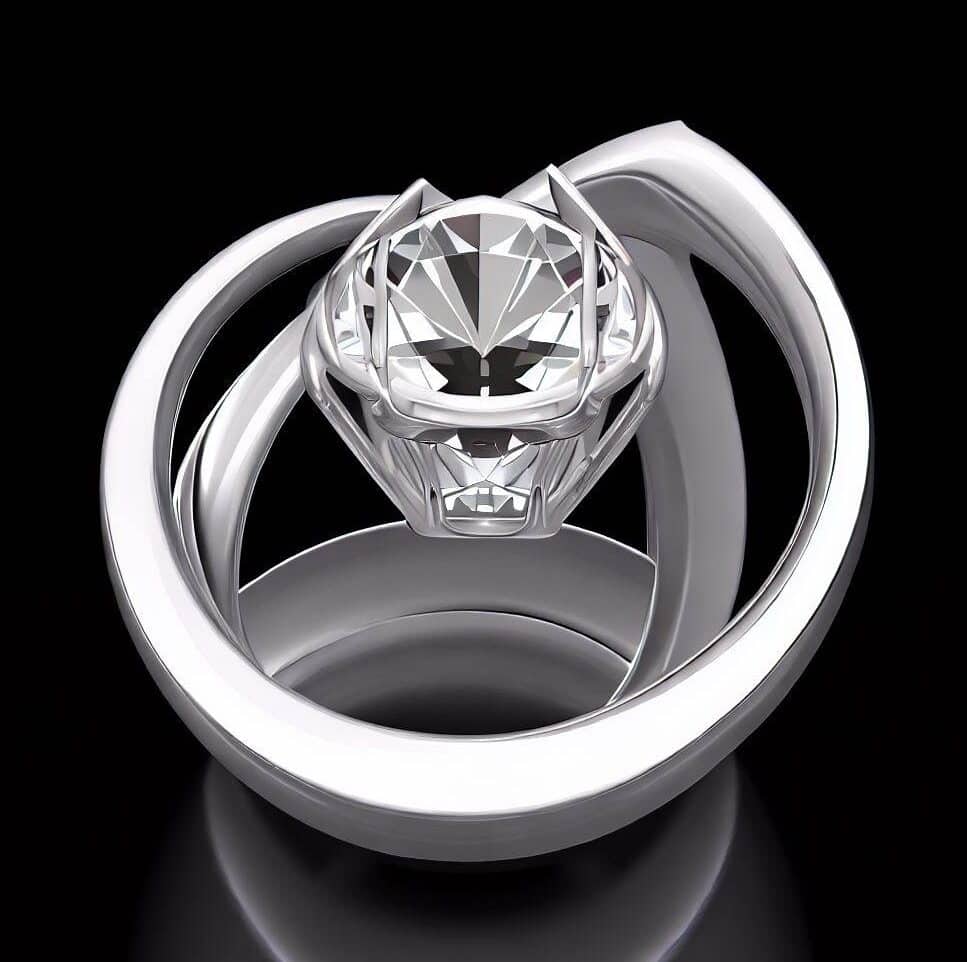
Diamonds spread throughout the world through trade and conquests and adorned the crowns and jewelry of royal families and powerful leaders.
The first diamond mine outside of India was found in Brazil in the 18th century, and later deposits were discovered in South Africa, Australia, Russia, and Canada.
Diamonds also became a symbol of love and commitment, especially after Archduke Maximilian of Austria gave a diamond ring to Mary of Burgundy in 1477.
Diamond Polishing for Jewelry
Diamond polishing is a technique that involves enhancing the brilliance and appearance of these gemstones using abrasive tools and materials.
There are different forms and steps to carry out diamond polishing, depending on whether the diamonds are rough or already cut.
For rough diamonds, the polishing process involves several stages: cleaving, shaping, cutting, and faceting.
These stages are performed with the help of other diamonds or diamond tools since they are the only material capable of scratching or cutting a diamond.
Cleaving involves making a groove in the diamond with another diamond and then striking it with a steel blade to separate it into smaller parts.
Shaping involves giving the diamond a basic shape, such as round, oval, or square.
Cutting involves making the facets of the diamond with a rotating wheel coated with diamond dust. Polishing involves smoothing and shining the facets with a special paste made from diamond dust.
Care and Cleaning of Diamonds
It can be done at home with some simple materials. A liquid detergent, alcohol, or some specific liquid can be used to clean and polish the diamonds. Rubbing the diamond with the chosen liquid and then rinsing it with warm water will help remove dirt and restore the diamond's shine.
Synthetic or Artificial Diamonds
Synthetic or artificial diamonds are those produced in a laboratory by replicating natural conditions or using other chemical methods.
These diamonds have the same chemical composition, crystal structure, and physical properties as natural diamonds but can be created in greater quantity and with less environmental impact.
Synthetic diamonds are used for both jewelry and industrial purposes.
Diamond Extraction
Diamond extraction is the process of obtaining diamonds from the rock or soil where they are found.
Diamonds are formed under high pressure and temperature conditions in the Earth's mantle and reach the surface through volcanic eruptions that create rocks called kimberlites.
Diamonds can also be found in alluvial deposits, which are sediments transported by water from the original sources.
There are different methods of diamond extraction, depending on the type and location of the deposits. Some of them are:
Artisanal Extraction
This is the simplest method and involves using hands to sift through mud, rock, and soil in search of diamonds. It is often practiced in less developed countries or conflict zones.
Hard Rock Mining
This method is used to access diamonds found deep in the kimberlite rock. It involves drilling and creating tunnels and underground chambers where the rock is extracted using explosives or machinery. This method requires significant investment and can have negative environmental impacts.
Open-Pit Mining
This method is used to extract diamonds found near the surface in the kimberlite rock. It involves removing large amounts of soil and rock with excavators and trucks, creating huge craters or pits. This method also entails high costs and significant environmental impact.
Alluvial Mining
This method is used to extract diamonds found in alluvial deposits, such as rivers, lakes, or coasts. It involves dredging or vacuuming the sediment (mud and gravel) with pumps or barges and separating the diamonds from the sand and gravel.
Value and Investment
The value and investment of diamonds are an interesting topic. According to some articles I found, diamonds have become more expensive due to an increase in demand, especially for smaller and cheaper stones.
Diamonds offer several advantages as an investment, such as:
- Protection against inflation, market crashes, and currency changes.
- Anonymity (no need for any registration).
- Global convertibility, meaning that diamonds, along with gold, are the only alternative currency accepted internationally with the same value worldwide.
- Tax-free value gains.
- Low maintenance cost.
- High prestige.
- Independence from prices: prices are independent of government laws, and therefore diamonds retain their value.
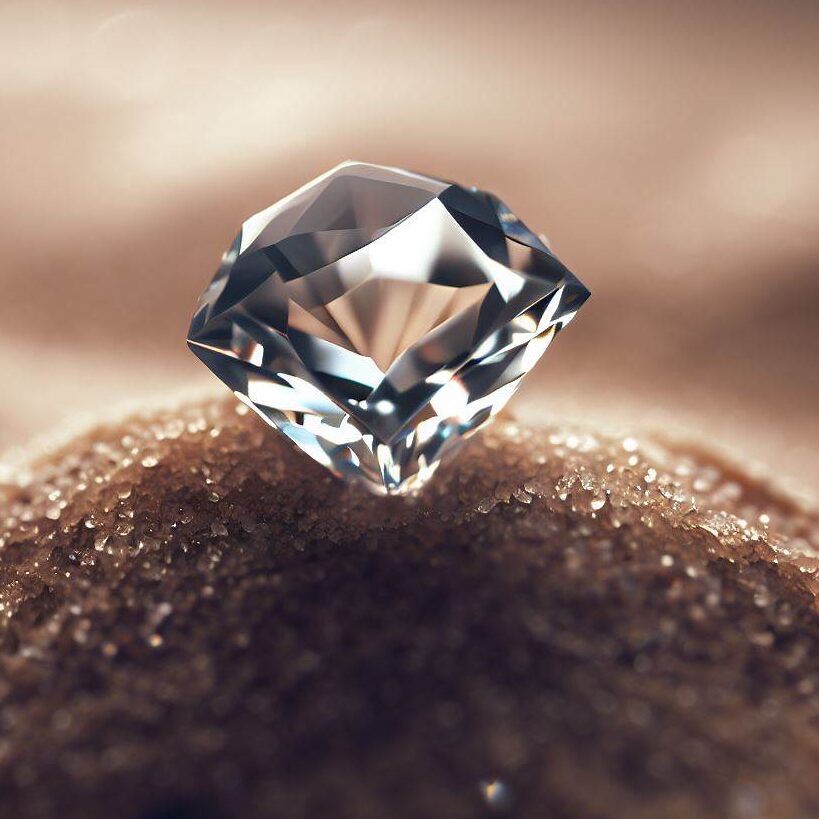

Sandra Sanchez
Sandra is passionate about jewelry and interior design. She graduated in interior design from Universidad Taller 5 in Colombia and has completed several courses and postgraduate studies in Jewelry in Barcelona and Madrid, Spain. She combines her work as a jeweler and interior designer with teaching.
